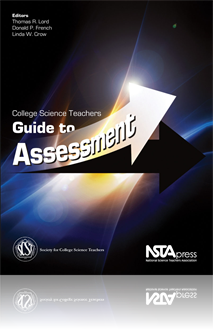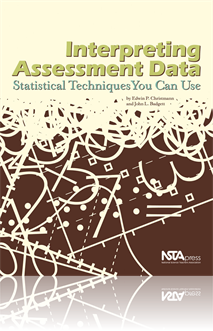All Book Chapters
Book Chapter
Assessments That Assist in Motivating Students
Assessments are one of the few ways students can be reached individually. You can directly interact with each student. If used in thoughtful ways, assessments can motivate students to engage in class and to study on their own. In this chapter, the au...
Book Chapter
Means of Linking Research to Practice in Organizing a Course on Student Assessment
Accurate assessment of student achievement is an important requirement of educators. The author, in his role as professor in Science Education at the University of Calgary, taught an assessment course for master's students and student teachers. The ...
Book Chapter
Writing/Using Multiple-Choice Questions to Assess Higher-Order Thinking
Most graduate entrance exams (including the GRE, MCAT, and DAT) are based on multiple-choice questions. Many later exams, such as the medical board exams, are also multiple choice. Therefore, it is important to make sure that students are prepared fo...
Book Chapter
Tips on Classroom Assessment: How to Teach Our Students to Take Multiple-Choice Exams
Multiple-choice exams are one of the few assessment strategies available for large-lecture sections of students. The author teaches students who are recently out of high school and realizes that they need to be "taught" certain skills for taking mult...
Book Chapter
Better Multiple-Choice Assessments
Multiple-choice questions have an important place in the assessment of student learning and constructed correctly, can provide instructors and students alike with valuable insight to student learning. This chapter is devoted to helping readers get th...
Book Chapter
Assessment of Students' Learning Through the Creation of Scientific Posters
Assessment of student knowledge takes many forms. This chapter features the presentation of scientific posters—one assessment used successfully in upper-division biology courses. The posters, on topics chosen by the students in consultation with co...
Book Chapter
How Assessment and Testing Developed
The United States has approximately 55 million students in grades K–12. On average, teachers administer 100 teacher-generated tests per school year, which translates into America’s students taking approximately 550 million—that’s 550,000,000�...
Book Chapter
An old saying goes, “The only constant is change.” No truer words have ever been spoken, especially in a time of reform. As a matter of fact, reform is change. This chapter examines change from two perspectives. The first perspective examines the...
Book Chapter
The Role of Curriculum Materials in Reform
Distinguishing between standards-based curriculum materials and others requires considerable expertise in science content and pedagogy. Research suggests that even experienced teachers may not recognize how standards-based instruction can be embodied...
Book Chapter
Learning From Innovative Instructional Materials and Making Them Your Own
This chapter examines the interplay between the intended implementation of designed, innovative instructional materials and the enacted curriculum by teachers who are accustomed to customizing their own instruction. When the Education Development Cen...
Book Chapter
Building Leadership Teams to Create Professional Learning Communities in Secondary Schools
This chapter proposes one way to foster teamwork and develop a professional learning community at the secondary level by describing the development of a leadership team focused on improving science teaching and learning. Forming a leadership team is ...
Book Chapter
Essential Partnerships in the Reform of Secondary Science
Alice’s travel through Wonderland resembles our journeys with reform. We often encounter new experiences. We learn from events. Some tasks are harder to complete than they initially appear. Moreover, we tend to encounter the same lively characters ...
Book Chapter
Using Data to Reform Science Instruction
This chapter will introduce you to skills and strategies used to examine classroom assessment data to improve science instruction. Although the authors advocate using multiple forms of student work to inform instruction, they will focus on using stud...
Book Chapter
Appropriate Practice for Linguistically Diverse Science Learners
The population of the United States continues to become increasingly diverse, both culturally and linguistically. In less than two decades, one half of the students in the United States will be non-white and Latino, with one quarter of the total stud...
Book Chapter
One Teacher’s Journey Toward Reformed Teaching
Reform requires us to rethink our teaching, to view teaching through different eyes. Such change requires professional development experiences that are long term and sustained. The experiences must challenge teachers to consider new ways of thinking ...




